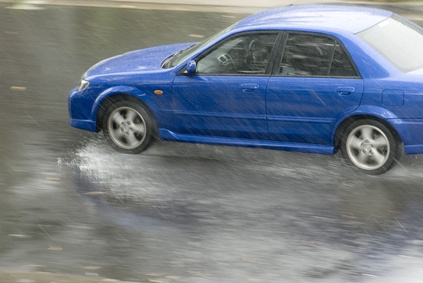
Many commercials for new cars and tires talk about the short stopping distances the vehicle or tires can give you. However, factors other than the brand of tires or the type of car you drive affect your stopping distance. Knowing what these factors are can help you become a safer driver.
It takes time for your brain to send signals to your foot to move from the gas pedal to the brakes. As this takes place, your car continues to travel at its original speed, covering a distance of hundreds of feet. If your reaction time is impaired due to drugs, alcohol or sleepiness, the reaction time increases, which in turn increases your stopping distance.
If the road is wet, snowy or icy, the friction between your tires and the road decreases. With a lower level of friction, the stopping distance increases because your tires don't have as much to grip to. In addition, the slope of the road will affect your stopping distance. If you're traveling uphill, your car will naturally want to go with the pull of gravity and go downhill, decreasing your stopping distance. Going downhill, on the other hand, pulls your car forward with gravity and increases the distance you need to come to a complete stop.
The heavier and larger your vehicle is, the more momentum and kinetic energy it has to continue moving forward. This is why you often see a different speed limit posted for larger vehicles on interstates. A large semi truck will have a much longer stopping distance than a sedan-style car because their sizes and weights are very different from each other.
The speed of your car is one of the biggest factors in determining stopping distance. For example, if a vehicle travels at 60 miles per hour, it covers 88 feet per second regardless of its size or the road conditions. If you drive at a higher speed, it will take you longer to stop because the number of feet you are covering per second is already more than if you were to travel at a lower speed.